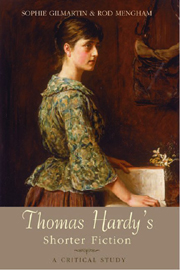1 - Wessex Tales
Published online by Cambridge University Press: 12 September 2012
Summary
Thomas Hardy's peculiar, idiosyncratic vision can move from a sweeping view of a vast landscape to fix upon the insects which occupy its smallest spaces; it is this eye that has led many to describe his writing as cinematic. Indeed David Lodge has written that Hardy's ‘verbal description […] can be readily analysed in cinematic terms: long shot, close-up, wide angle, telephoto, zoom, etc’. But rather than the camera lens it was in fact the telescope, ‘the big brass telescope that had been handed on in the family’, that was instrumental in developing his way of seeing from boyhood. Throughout Hardy's childhood, the Sunday walk would take his family together southwards along the heath to a ‘silent green pond’ called Rushy-Pond, and from there they would ascend to a high point topped by a tumulus known as Rainbarrow. Hardy's friend in later life, the Dorset photographer Hermann Lea, recounts how from Rainbarrow, ‘with the aid of a telescope, his father would point out places of interest, houses and other buildings on which he was then working.’ Between 1914 and 1916, before the First World War made petrol scarce, Lea drove Hardy ‘many thousands of miles in my motor car’. Their destinations, mapped out by Hardy upon the ordnance survey maps that he loved, were often high places: ‘he always wanted to reach high points: “and please don't forget to bring your glasses”, he used to say to me when we set out for some high point, my binoculars having superseded the old telescope’.
- Type
- Chapter
- Information
- Thomas Hardy's Shorter FictionA Critical Study, pp. 1 - 52Publisher: Edinburgh University PressPrint publication year: 2007



